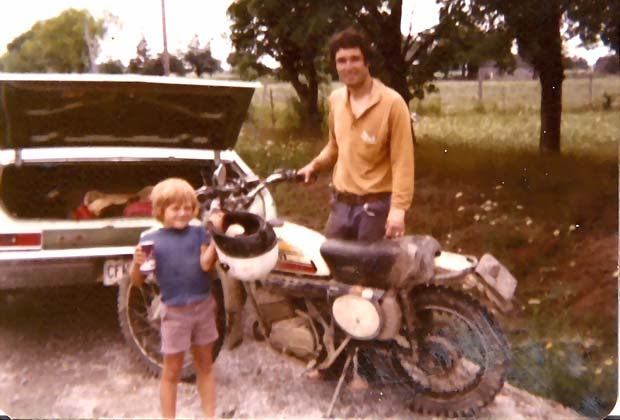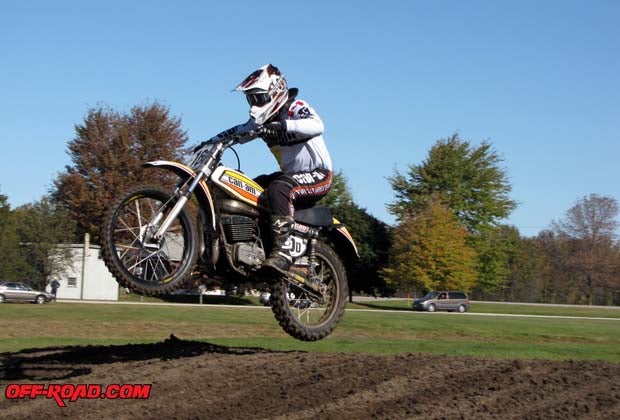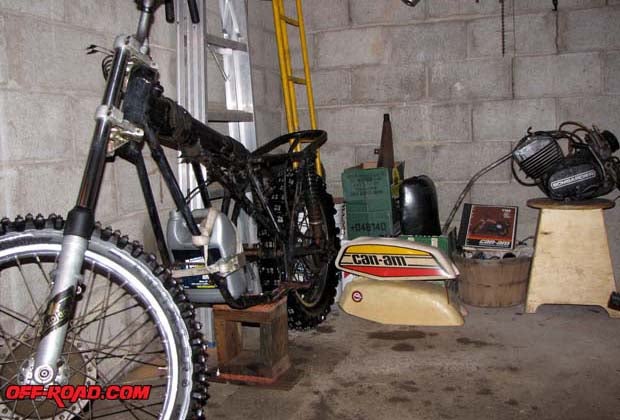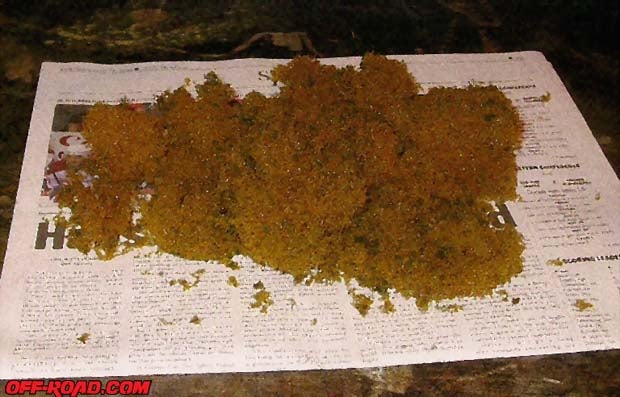
Thirty-odd years later I was working as editor of Canadian motocross magazine IMX, and during one of our annual ‘Mega Motocross Shootouts’ one of our test riders, AHRMA racer Oscar Gaetan, brought along his nicely restored Jimmy Ellis replica Can-Am MX 250.

Of course, I was captivated. Before long, I had forgotten about the new bikes and spent most of the day ripping around on that ancient, yet surprisingly fast, Can-Am. One of these days, I pledged to myself, I was going vintage racing on a ‘white-tank’ Can-Am of my own.

Over the years I stuffed the Can-Am idea into a dark corner of my mind, until I heard something about an upcoming vintage race at Ormstown, Quebec. A few phone calls later it was confirmed: Ormstown would have Can-Am as the featured brand, with development rider and former World Champion Jeff Smith as the guest of honour. All of a sudden that dark spot in my mind lit up like a Roman candle. I needed a Can-Am and I needed it now! Luckily I knew just where to find one. Dad’s garage!

Dad’s old 175 T’NT had been leaning against a wall since the mid 80s, when it last saw service as an ice racer. For 25 years it sat there, accumulating dust, and despite many offers over the years Dad refused to part with it. Lots of other bikes had come and gone, but that old Can-Am was a part of him that he couldn’t stand to let go. So it took some pleading, begging, whining and snivelling to finally get the ‘Ok’ to put this project together and perform a resurrection. We found the idea of me racing the exact bike my dad had raced 35 years ago to be cool beyond belief!

The transmission and fuel had been drained before it was retired, and dad still had all the factory service manuals and most of the original parts stashed away. He also had a binder full of race-tuning updates that Can-Am used to mail to owners. I pulled the bike apart quickly with little effort, thinking nothing had been butchered too badly in its former life.

The engine turned over smoothly and seemed to have decent compression, but the chassis was another matter. The steering head bearings were gnarly, the fork seals leaked and the frame had been broken and hastily repaired in several places while it was raced. The airbox was broken and the footpegs were sagging. The suspension at both ends had really stiff springs for ice racing as well. By now I’d been doing some research as well and finding other problem areas chronic to this generation of Can-Am motorcycles that needed attention.

Rotax engines have a well-deserved reputation for being bulletproof, and Dad told me this engine had never been out of the frame before! It had several oil leaks, but a good, tight top-end. We started making a list of parts. Kick-starter, crank seals, clutch assembly…Now we had to do some research on where to find parts for the machine. Oscar Gaetan pointed us toward Kevin Annette, owner of Vintage Parts 4U (http://www.vintageparts4u.com/)

Vintage Parts 4U set us up with a new clutch to replace the badly worn out stocker, new crank seals, a lighter motocross flywheel, kick-starter, airbox, air filter, seat cover, cables, plastics…by the time we left the shop we had a box full of new-old stock and reproduction Can-Am parts!

Seeing a strong demand for restoration of old Can-Ams, Annette opened the shop in 2006 on a whim. It took off like a rocket, to the point that he now has parts for any era Can-AM and most other vintage brands. What he can’t find he makes, in his own machine shop.

We were warned that Can-Am stuffed the oil-injection tank, in the backbone of the frame, with coarse foam to keep oil from sloshing around when the tank wasn’t full. Over time that foam deteriorates, to the point that it will surely plug up the oil pump. Many riders make internal engine modifications to run pre-mix, but we preferred to use the old reliable oil pump. The Internet is full of hit or miss methods of getting that foam out of the tank, none of them very safe. Time to get out the sawzall…

The amount of mucky old foam in there was astonishing! Had we started the bike when it was first brought out of hibernation, and we almost did, we would have killed it!

Once the gooey mess was cleaned from the frame we welded up our opening, along with properly repairing the other broken areas.

Vintage parts4U has new footpeg mounts, designed to hold modern MX pegs, which we will be welding on soon. The suspension (wimpy 35mm Ceriani forks and 4” travel Koni shocks) will be rebuilt and modified, within vintage racing rules, by Jim Hunt at Cycle Improvements/MX Tech (http://www.cycleimprovements.com/) We’ll freshen up the 175 engine and maybe even do a bit of extra tuning to give the bike more snap for vintage motocross and hare-scramble racing. Our goal is to have a decent looking vintage race bike for Ormstown and other vintage races this fall, then worry about making it pretty over the winter.
Stay tuned for part-two!


 Your Privacy Choices
Your Privacy Choices